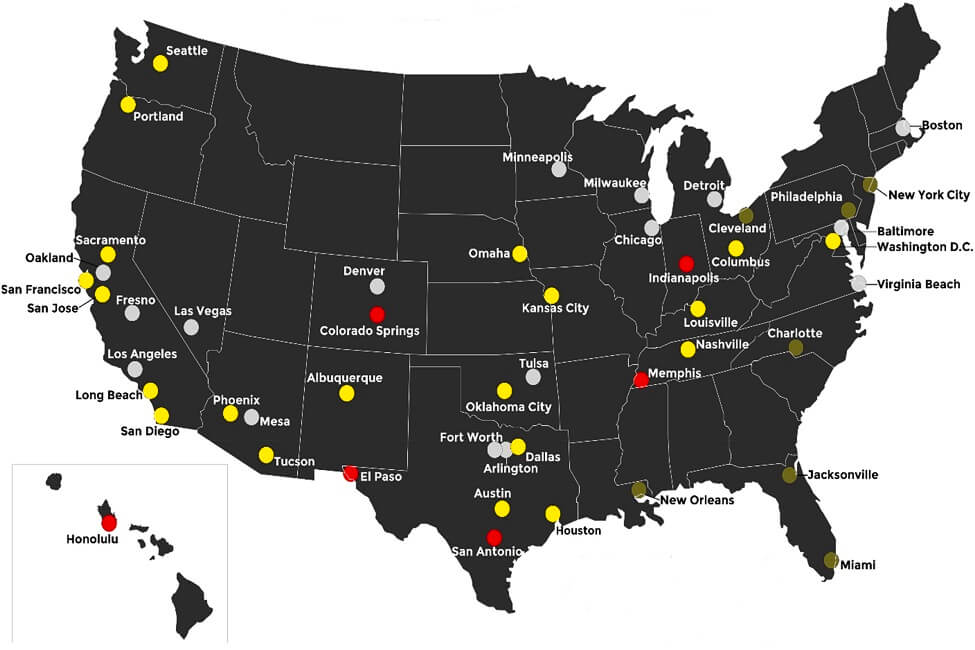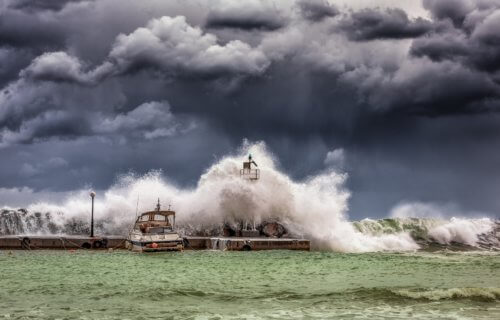Just 7 of nation’s 50 largest cities have ‘strong plan’ ready for natural disaster — while LA, Chicago, Atlanta among those with ‘no visible plans’ at all.
BOCA RATON, Fla. — Hurricane Katrina devastated the city of New Orleans in 2005. While the entire city experienced incredible destruction, particularly vulnerable populations like the poor, carless, and elderly bore the brunt of the damage when the levees broke. Unfortunately, new research finds America’s urban evacuation planners have only made small improvements to their disaster preparedness plans since then.
Prior to Katrina, evacuation planners rarely considered the specific needs of people without cars and vulnerable populations like low-income residents, tourists, or anyone else with special needs or limitations. Post-Katrina, the nation’s transportation planners vowed to focus more intently on these needs. According to researchers at Florida Atlantic University, however, they dropped the ball in a major way.
Study authors found that officials have only made marginal improvements to evacuation plans in America’s 50 largest cities. Researchers point out a lack of preparedness across the board, but especially when it comes to evacuating carless and vulnerable populations.
This research is based on data from plans collected and analyzed in the years right after Hurricane Katrina as well as evacuation plans created right before the COVID-19 pandemic. Study authors also created an Evacuation Preparedness Rating encompassing five specific dimensions identified by researchers as the ideal, best practices when evacuation planning for vulnerable group.
Those five dimensions are: special needs registries, specialized transportation plans for individuals with specific needs, pick-up location plans, multimodal evacuation plans, and pedestrian evacuation plans. The team then evaluated all 50 cities based on the Composite Evacuation Preparedness Rating System. That system features four designations: weak (0–4 points), moderate (5–7 points), strong (8–10 points), and N/A (unreviewed plans).
Which cities are prepared for a natural disaster?
Researchers conclude that only seven cities currently have strong plans in place: Charlotte, North Carolina, Cleveland, Ohio, Jacksonville, Florida, Miami, New Orleans, New York, and Philadelphia. Study authors recommend that other cities use these seven as a template for their own plans.
“While it is promising that more cities are developing evacuation plans, overall, it remains disheartening that not every city was able to learn the lessons of not being prepared, especially for carless and vulnerable populations, as showcased to the nation during the aftermath of Hurricane Katrina in 2005,” says senior study author John L. Renne, Ph.D., a professor and director of the Center for Urban & Environmental Solutions (CUES) in FAU’s Charles E. Schmidt College of Science, in a university release.

(CREDIT: Florida Atlantic University)
Meanwhile, another 20 cities attained a moderate rating, six cities earned a weak rating, and the plans for 17 cities were either unavailable or simply didn’t exist. Cities with no visible plans include Atlanta, Chicago, Detroit, Las Vegas, Los Angeles, and Minneapolis.
“In answer to the question we posed in our paper, ‘what has America learned since Hurricane Katrina?’ – the answer based on our findings is clearly: NOT ENOUGH,” Prof. Renne adds. “Many cities that have strong plans, including Jacksonville, Miami, New Orleans, and New York are coastal cities that have experienced strong hurricanes in the past. This study lends support to the theory that cities do not develop strong evacuation plans, ones that accommodate the needs of all people, unless they have already experienced a major disaster or are under a threat.”
The study is published in the International Journal of Disaster Risk Reduction.

